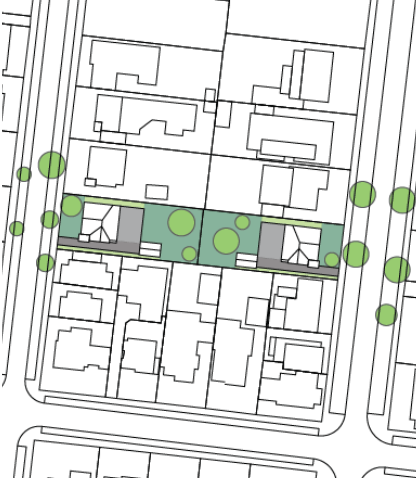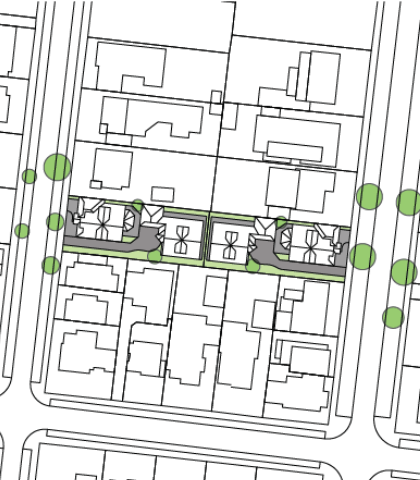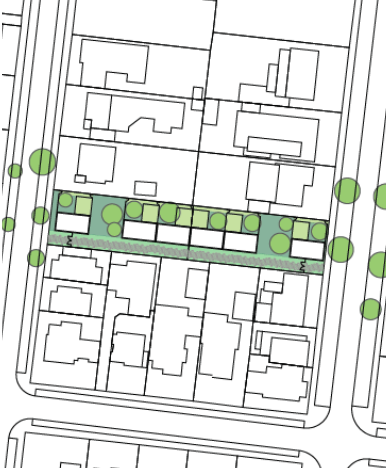Draft resources for informing better infill design
Our IRP4 (Water sensitive outcomes for infill developments) team has prepared two new resources in draft for consultation—a typologies catalogue of dwelling designs for water sensitive infill development, and an evaluation framework that provides consistent and objective methods for evaluating the water sensitive performance of alternative infill design options.
Both outputs will be used in the next phase of the research for the case study testing of water sensitive infill opportunities in Adelaide and Perth.
Draft typologies catalogue
We know good dwelling designs can mitigate adverse water impacts, such as increased stormwater runoff and stretched water supplies. We also know good dwelling design can use water to create water-related amenity and liveability.
To make it easier for councils, planning agencies and developers to understand and access good dwelling design, our draft typologies catalogue contains designs created by CRCWSC researchers at Monash University and University of Western Australia, and informed by performance evaluation by researchers at The University of Queensland. Examples of alternative infill typologies included in the catalogue are shown in Figure 1.
Initial performance evaluations of example typologies have predicted that increased dwelling densities can be achieved without further increases to stormwater runoff. The designs achieve this in a variety of ways, including:
- reducing building footprints to maximise impervious surfaces
- arranging the built form more efficiently on a site
- using permeable paving
- encouraging greater consideration of shared private and shared communal spaces.
Changes in hydrological flows and changes in water use, estimated using our Infill Performance Evaluation Framework (see below), are some of a suite of indicators being used to evaluate water sensitive performance.

Existing dwellings
(2 single-storey detached houses on a 2-lot site)

Business as usual infill
(4 single-storey detached houses on a 2-lot site)

Water sensitive infill
(6 two-storey integrated dwellings on a 2-lot site)
Figure 1—Examples of business as usual versus water sensitive suburban sub-division
Draft infill evaluation framework
We’re also inviting CRCWSC partners and researchers to provide feedback on our draft infill evaluation framework.
The infill evaluation framework, developed by CRCWSC researchers at The University of Queensland, provides consistent and objective methods for evaluating the water sensitive performance of alternative infill design options. It generates evidence for informing planning processes towards better dwelling designs.
The framework currently evaluates performance against the following principles:
- Hydrological flows—restoration of hydrological flows (stormwater runoff, evapotranspiration, infiltration) towards more natural volumes
- Water efficiency—supplementation of water supplies with locally harvested or recycled sources, to minimise water extracted from outside the urban system
- Quality spaces—enabling quality outdoor private and public spaces
- Urban cooling—enabling the use of water for thermal comfort.
We’re using the evaluation framework to evaluate examples of water sensitive infill designs compared with business-as-usual, both at the individual site scale and the precinct scale. We’re using Salisbury in Adelaide and Knutsford in Fremantle, Western Australia as case studies.
Site-scale analysis of individual typologies allows the research team to understand how the details of the dwelling form, layout, and water servicing technologies influence performance per dwelling unit. Precinct-scale analysis of infill development areas allows the research team to explore how the density and distribution of infill can be optimised to achieve population targets without compromising water-related performance objectives.
A workshop held at the CRCWSC conference in Brisbane in March introduced the evaluation framework for comparing alternative infill designs. Workshop participants used the framework to compare the potential performance of some hypothetical examples (those shown in Figure 1). A summary of their results is shown in Figure 2. The black outer line represents a nominated target performance, for the multiple indicators mentioned above. The red and green lines represent the relative performance of the infill design alternatives (business as usual versus water sensitive respectively) compared with typical existing dwelling (dashed grey line).
The business as usual infill design (Figure 2) was rated to have reduced performance compared to the existing dwellings, especially in terms of increasing stormwater runoff, reducing access to quality outdoor space, and dwelling amenity. By contrast, the water sensitive infill design rated significantly better especially for maintaining dwelling amenity and access to private outdoor space, enhancing access to communal outdoor spaces, and reducing stormwater runoff. The framework is useful not only for screening the performance differences of designs, but also for guiding planners, designers and developers towards the setting of performance objectives and targets for infill development.
The IRP4 team is finalising these new resources and welcomes input or feedback from CRCWSC partners and researchers, who can access both items on the IRP4 webpage.

Figure 2—Example infill performance evaluation, generated by participants at the IRP4 workshop at the CRC conference
About the IRP4 (Water sensitive outcomes for infill developments) project
Most major cities in Australia expect significant infill development over the coming decades. Without significant intervention, 'business as usual' is expected to have considerable influence on the hydrology, resources efficiency, liveability and amenity of our cities. This project aims to develop and apply a performance framework to understand infill impacts, create design options and processes through case studies, and identify improved governance options and arrangements.
Find out more here.